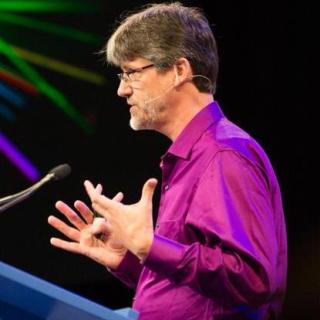Luke Keller maintains research programs in the astrophysics of star formation and planetary system formation and in imaging and spectroscopic instrumentation. (Publication list via Google Scholar)
Luke's astrophysical interests are in the chemistry and evolution of proto-stellar and proto-planetary objects. His current interest is the study of young stars that may be forming solar systems in environments where the abundances of heavy elements (e.g. O, C, Si, etc.) are low. This allows a glimpse into the process of planet formation in earlier era of the universe. He was a member of a team that used the NASA Spitzer Space Telescope to gather infrared spectra of dust and gas orbiting stars other than the sun. He and his students process spectra from Spitzer data archives and analyze the results, looking for atomic and molecular signatures of material that may be forming planets. Luke also uses ground-based observatories to gather spectra and images of these objects. His current focus is on Herbig AeBe stars, a class of stars that are several times more massive than the sun and show evidence of disks of gas and dust orbiting them, which appear to be the precursors to solar systems.
Luke was Project Scientist (1999-2003) and co-investigator (2003-2015) on a team that built the Faint Object Infrared Camera for the SOFIA Telescope (FORCAST), a mid-infrared camera that will operate on the Stratospheric Observatory for Infrared Astronomy (SOFIA), 2.7-meter telescope housed in a 747 aircraft. He lead the final optical design, helped test the FORCAST optical system, and lead development of the FORCAST data analysis software. He also lead a team funded by NASA and the Universities Space Research Association to add spectroscopic capabilities to FORCAST. FORCAST was a widely utilized facility instrument throughout the SOFIA mission, which ended in 2022.

